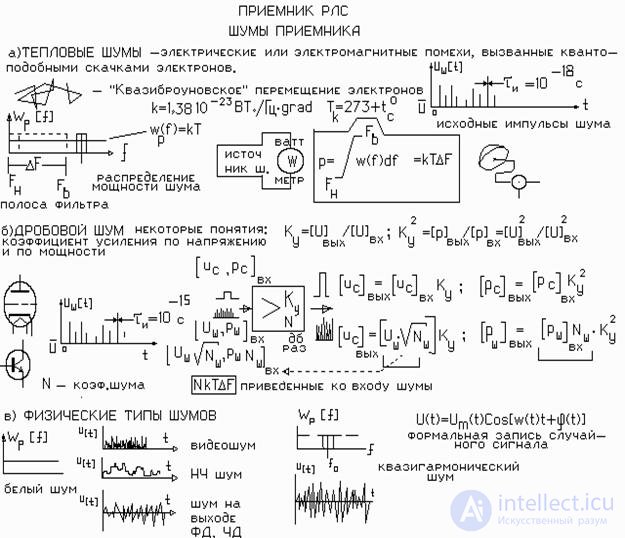Lecture

Fig. 2.3. Noise radar receivers
At the entrance of the radar receiver, broadband (up to 1000 GHz) electrical thermal noise is formed. However , radar uses only part of the spectrum.
(up to 100 GHz). Within this band, the spectral level can be considered constant.
Such a noise model is called “white”, and the whole noise is “white”.
The signals reflected from the target are amplified by the radar receiver. Together with them, the input electrical noise amplifies . To these noises own receiver noise added .
The noise level can be predicted and calculated using various methods.
The 1st method of calculation is to use the concept of noise temperature T and Boltzmann's constant k .
This method allows you to calculate the power spectral density of electrical noise at the input of the receiver n 2 W = kT . Here and below T in degrees Kelvin.
2 - way.
The receiver's own noise level is more difficult to calculate, since the receivers have different gain factors and bandwidth. And here is the way out.
Connect receiver to the input circuit of the antenna-waveguide path. Next, measure the amplitude ( s W ) in the second or the noise power ( R W ) of the output of the receiver at its output and its gain K y . Then, divide output noise amplitude by the gain coefficient K y or the output power by the factor squared, and then by the width of the bandwidth D F. As a result, the spectral density of the receiver's own noise is given, given to the input on the scale of amplitudes n W or powers N 2 W .
So the concept of "reduced noise".
3rd way.
It happens that in the passport to the acquired receiver its noise figure N is indicated .
Then enough calculated value of n 2 w to multiply by N. n 2 w = N kT. Taking into account the band D F , it is easy to calculate the power of the noise brought to the input.
( p w ) at x = NkT D F
Comments
To leave a comment
Radio Engineering Systems
Terms: Radio Engineering Systems